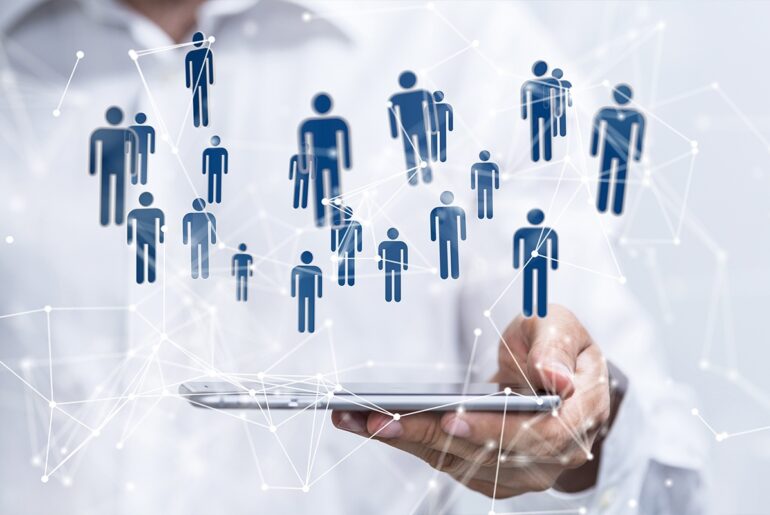For pest control businesses and professionals, termite infestations can be a common, challenging, and expensive issue to deal with. Termite damage can cause significant harm to structures and properties, making it crucial for professionals to have a solid understanding of the different types of termite treatments available.
In this article, we will discuss the various methods of termite treatment, including chemical treatments, baiting systems, and physical barriers. By familiarizing yourself with these different options, you can better equip your pest company to effectively address termite infestations and protect your clients’ properties from further damage.
Whether you are a seasoned pest control professional or just starting out in the industry, having a comprehensive knowledge of termite treatments is essential for providing top-notch service to your customers. So, let’s dive into the different types of termite treatments and explore how each method can help you combat these destructive pests.
Dampwood Termites
Dampwood termites are typically found in damp and decaying wood, such as logs, stumps, and fallen trees. They require high moisture content to survive, making them more commonly found in coastal areas or regions with high humidity levels. Dampwood termites do not typically infest structures like buildings or homes unless there is a significant moisture issue present.
If you suspect a dampwood termite infestation, it is important to address any moisture problems in the affected area before implementing treatment. This may involve fixing leaky pipes, improving drainage around the property, or using dehumidifiers to reduce humidity levels. Once the moisture issue is resolved, you can consider using chemical treatments or baiting systems to eliminate the termites.
Dampwood treatment options:
There are several treatment options available for addressing an infestation of dampwood termites.
1) Chemical treatments are a common method used to eliminate dampwood termites. These treatments typically involve the application of liquid termiticides to the affected area, either by spraying the product directly onto the wood or injecting it into the soil around the infestation site. The termiticide works by targeting and killing the termites upon contact, effectively eradicating the colony.
2) Baiting systems are another popular option for dampwood termite treatment. Bait stations are strategically placed around the property, containing a toxic bait that is ingested by the termites and taken back to the colony, resulting in their eventual demise. Baiting systems are effective for long-term termite control and can be a less invasive treatment method compared to chemical treatments.
3) Physical barriers, such as moisture barriers or ventilation systems, can also help prevent dampwood termites from infesting a property. These barriers can help reduce moisture levels in the affected area, making it less hospitable for termites to thrive. By creating a physical barrier between the termites and their food source, you can effectively deter them from causing further damage to the structure.
Drywood Termites
Drywood termites, as the name suggests, infest dry wood structures and do not require high moisture levels to survive. These termites can be found in furniture, wooden beams, and other dry wood components of buildings or homes. Unlike dampwood termites, drywood termites do not need direct contact with the soil to thrive, making them a versatile and adaptable pest.
Drywood treatment options:
When it comes to drywood termite treatment options and treatment plans, there are several methods available that can effectively deal with these pests. Unlike subterranean termites, drywood termites do not require a connection to the ground, which means they can infest various structures such as furniture, walls, and wooden frames. Here are some types of treatment options for drywood termites:
1. Fumigation: This is one of the most common and effective methods for eradicating drywood termites. It involves sealing the infested structure and releasing a gas, usually sulfuryl fluoride, which penetrates every nook and cranny, killing the termites.
2. Heat treatment: Drywood termites are highly susceptible to heat. This method involves heating the structure to temperatures above 120°F (49°C) to exterminate the termites. Heat treatment is often used for localized infestations in smaller areas.
3. Natural or chemical wood treatments: There are various natural and chemical treatments available that can be used to treat drywood termite-infested wood. Natural treatments may include borate-based products that penetrate the wood and kill the termites, while chemical treatments involve the use of liquid termiticides specifically designed to combat drywood termites.
Get Started With Pest Control Software!
Subterranean Termites
Subterranean termites are a common species of termites that live underground and build their colonies in the soil. They require contact with the ground to survive, as they need moisture to thrive. Subterranean termites can enter buildings through cracks in the foundation or other openings in the structure.
These termites are often found in areas with high humidity levels and moisture, such as basements, crawl spaces, and around plumbing fixtures. They are known for their destructive feeding habits, as they can quickly consume wood and other cellulose materials in a structure, causing extensive damage if left untreated.
Subterranean treatment options:
There are several subterranean treatment options available for addressing termite infestations. These options include using liquid termiticides, termite baits, and physical barriers.
- Liquid termiticides are one of the most commonly used subterranean treatment options. They are applied to the soil around the foundation of a building to create a chemical barrier against termites. The termiticide can either repel or kill the termites upon contact. The effectiveness of liquid termiticides in eliminating termites is high, as long as the application is done correctly and the chemical barrier remains intact.
- Termite baits are another subterranean treatment option. These consist of slow-acting toxic substances that are placed in bait stations underground. Termites feed on the baits and carry the toxic substance back to their colony, effectively eliminating the entire termite population. Termite baits are effective in the long-term control of termites, but they require patience as it may take months for the bait to spread to the entire colony.
- Physical barriers, such as stainless steel mesh or sand barriers, can be installed around the foundation of a building to prevent termites from accessing the structure. Termites cannot pass through the barrier, effectively blocking their entry. While physical barriers are highly effective in preventing termite infestations, they are usually used in conjunction with other treatment options for complete termite control.
Termiticide Application
Termiticide application is a crucial step in effectively controlling and preventing termite infestations. There are various methods used to apply termiticides, including surface application, soil injection, and direct wood injection.
The surface application involves applying the termiticide directly to surfaces that are at risk of termite infestations, such as foundation walls, crawl spaces, and wooden structures. This method creates a barrier that termites cannot penetrate, effectively eliminating existing termite populations and preventing future infestations.
Soil injection is another common method of termiticide application. It involves injecting the termiticide into the soil around a structure, creating a treated zone. Termites that come into contact with the treated soil are killed, preventing them from accessing the structure and causing damage.
Direct wood injection is a more targeted method used to control termites that have already infested wooden structures. Termiticide is injected directly into the infested wood, killing the termites and protecting the structure from further damage.
Moisture Removal
Moisture removal plays a crucial role in preventing termite infestations. Termites thrive in a moist environment, as they require water to survive. By eliminating excess moisture, we can effectively deter termites from infiltrating our homes and causing extensive damage. Here are some specific steps to address moisture issues:
1. Fix plumbing leak problems: Leaking pipes or faucets can create the ideal environment for termites, as the constant moisture encourages their growth. Regularly inspect and promptly repair any leaks to prevent a potential termite infestation.
2. Ensure proper drainage: Water accumulation around the foundation of a home is a red flag for termites. Verify that the gutters are clean and free from debris, and ensure that downspouts direct water away from the house. Installing a proper drainage system around the property can effectively redirect water away from the foundation, reducing the risk of a termite invasion.
3. Remove wood in direct contact with the ground: Termites are attracted to wood, especially when it is in direct contact with the ground. Conduct a thorough inspection around the property and remove any decaying wood or wooden debris in direct contact with the soil. This simple step can significantly reduce the likelihood of termite activity.
4. Use pre-treated wood: When constructing or renovating a home, opt for pre-treated wood. These materials contain chemicals that deter termites, acting as an additional layer of protection against infestations.
Gas Fumigation
Gas fumigation is a highly effective method of termite control that involves the use of fumigants to permeate throughout a home and disrupt the metabolism of termites. Fumigants are gasses that have the ability to penetrate through wood, soil, and other materials, reaching deep into termite-infested areas and eliminating the pests.
The fumigation process begins with the sealing of the structure using specialized tarps. This is done to contain the fumigant within the space, ensuring maximum effectiveness. Once sealed, a licensed pest control professional introduces the fumigant into the structure. The fumigant then disperses throughout the home, filling every crack and crevice where termites may be present.
Fumigants work by targeting the metabolism of termites, disrupting the normal functioning of their cells. The fumigant molecules interfere with the termites’ ability to produce energy and undergo normal biochemical reactions. This leads to cellular damage and, ultimately, death. The fumigant remains active for a certain period, generally 24 to 72 hours, ensuring comprehensive eradication of termites.
Start Using Termite Inspection Software for Your Business
In recent years, the use of termite inspection software has become increasingly popular among pest control businesses. This technology offers numerous benefits for companies looking to streamline their operations and improve efficiency. By utilizing pest control software like PestPac, businesses can better manage schedules, track customer information, monitor inventory levels, and even generate reports on job performance.
Benefits of PestPac
1. Increased efficiency: Streamline various aspects of pest control operations, such as scheduling, billing, and customer communication. This can help businesses save time and resources by automating repetitive tasks and allowing technicians to focus on providing quality service to customers.
2. Improved customer service: Businesses can easily access customer information, history, and preferences, allowing them to provide personalized service and build stronger relationships with their clients. This can lead to higher customer satisfaction and retention rates.
3. Enhanced accuracy: Keeps track of all treatments performed, products used, and scheduling information, reducing the risk of errors or oversights. This ensures that technicians are following proper protocols and providing effective pest control solutions.
4. Reporting and Analytics: Offers valuable reporting and analytics capabilities, allowing businesses to track key performance metrics, identify trends, and make data-driven decisions. By analyzing this data, companies can optimize their operations, improve efficiency, and ultimately increase their bottom line.
5. Integration With Sentricon Systems: Manage all your Sentricon devices in one place, including reports automation, scanning and inspection of Sentricon devices, and more.
Closing Thoughts
Termite treatments come in various forms, each with its own set of benefits and considerations. Whether you opt for gas fumigation, physical barriers, or baiting systems, it’s important to choose a method that suits your specific needs and circumstances. If you’re looking to improve your termite control methods or help your customers identify and resolve termite issues, consider exploring different treatment options and implementing software solutions like PestPac. By staying informed and utilizing the latest technology, you can ensure that your business remains competitive and continues to grow in the ever-evolving pest control industry. Stay ahead of the curve; book a free demo today!




